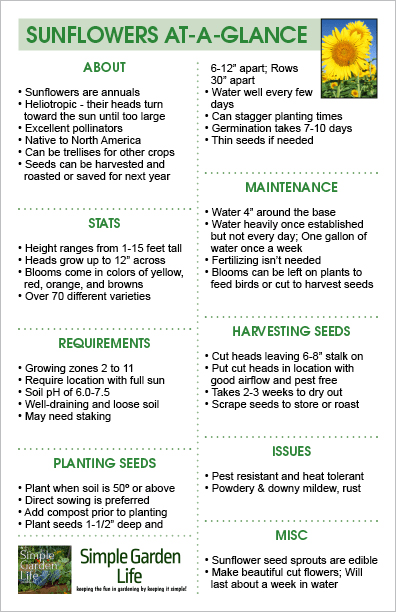Nothing says summertime quite like a big, bright yellow sunflower bloom! You can’t help but smile when you see those large, daisy-like heads pointing toward the sun. It’s like a little bit of sunshine and happiness in your own garden. If you haven’t considered growing sunflowers for yourself, then you really should. We’ll walk you through exactly how to grow sunflowers so you can enjoy this summertime beauty for yourself.
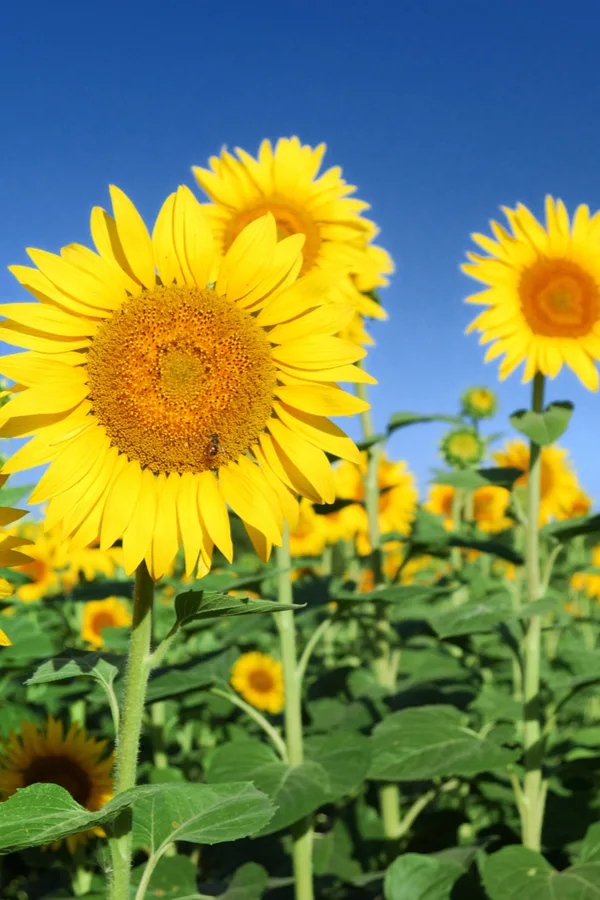
Sunflowers are native to North America, so they can handle most weather and soil conditions. They are hardy from zones 2 all the way to zone 11. They grow on sturdy, large stalks and are pest resistant and heat tolerant.
Early in their growing process before their heads become too large and heavy, sunflowers are heliotropic, which means they will literally turn their flowers to follow the movements of the sun from East to West, returning to face the East at night. How neat is that!
The Benefits Of Sunflowers Are Huge!
In addition to being beautiful to look at, sunflowers can be put to work in your garden as well. The larger varieties have really sturdy stalks and make excellent trellises for cucumbers and other vining plants to grow up. Their large flower heads are also excellent at attracting honey bees and other pollinators to your garden.
And let’s not forget about their seeds. Not only are sunflowers stunning and useful in gardens, but their seeds are also edible. Harvest the seeds when the heads begin to dry out, and you can have yourself a tasty snack. Leave the heads on the stalk, and you provide wonderful food for your local birds and animals.
Talk about your do-it-all summer plant
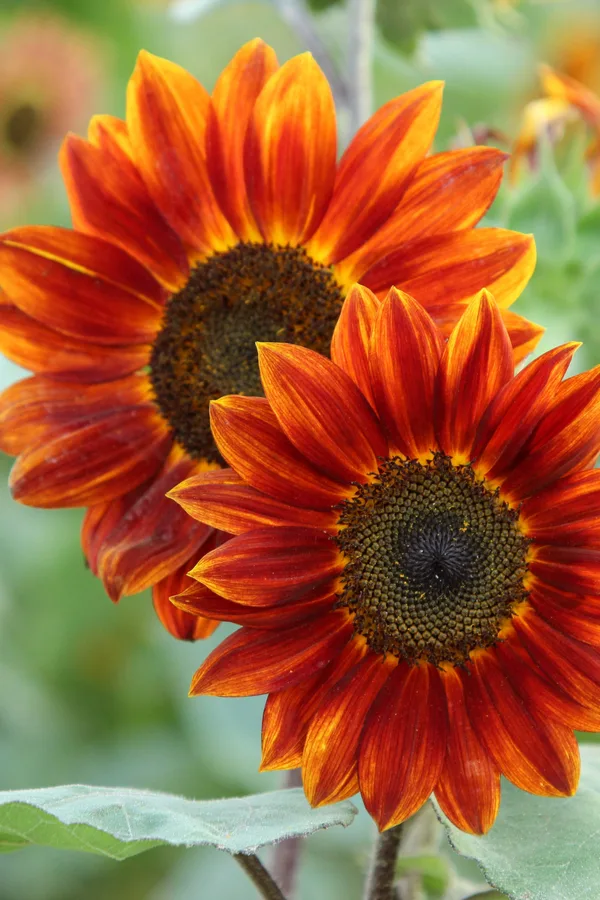
Varieties of Sunflowers – How To Grow Sunflowers
There are more than 70 different varieties of sunflowers, and most are based on their height and flower color.
Ranging from only one foot tall to over 15 feet, there’s a size that’s perfect for your growing location!.
Some sunflowers will only have one bloom per stalk while others have branching stems and multiple blooms. The heads of some varieties can even grow up to 12 inches across.
The large, towering varieties make great additions to fence rows or in front of the side of a barn. The smaller varieties make great container plants.
The color ranges of sunflower blooms are almost as vast as their height. From the traditional bright, sunny yellow you most commonly associate with sunflowers to fiery reds, oranges, and even browns, you are sure to find a color to match your style.
No matter what color or variety you choose, there’s definitely a sunflower for every space and container where you might want to add a bit of happiness and color to your property.
How To Plant, Grow, And Maintain Sunflowers
Soil Requirements for Sunflowers
Sunflowers require warm, loose soil that is rich in nutrients since they are heavy feeders. Soil should be above 50º Fahrenheit (10º Celsius) and the danger of frost should be way past.
The soil should be well-draining and loosely packed. Sunflowers have long tap roots that need to be able to spread out, so if you have heavy soil such as clay, make sure to amend it by adding lots of compost or even some sand.
The pH doesn’t really matter to sunflowers, but they prefer slightly acidic to somewhat alkaline soil with a pH of 6.0 to 7.5.
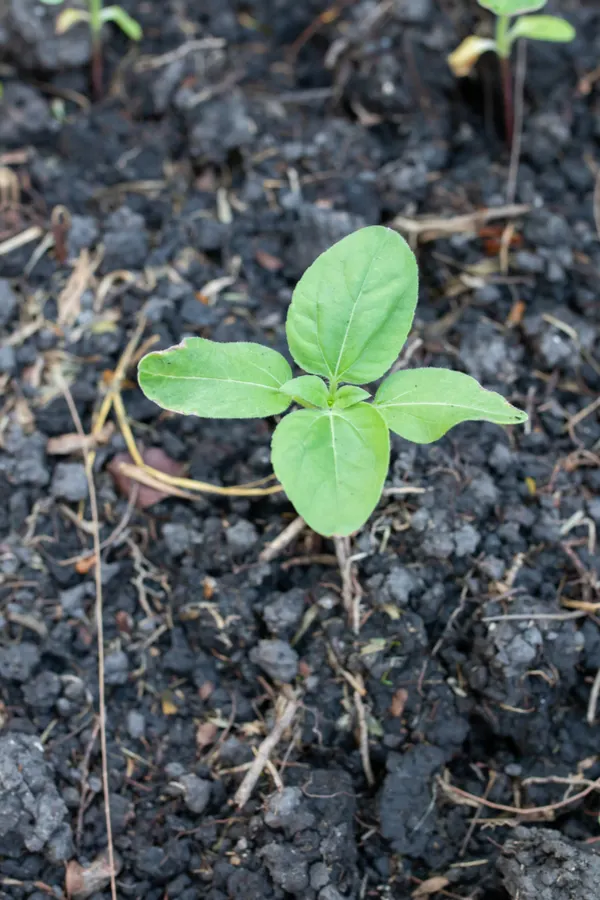
Planting Sunflowers
If you didn’t already assume it, sunflowers are a sun-loving annual, so they need to be planted in a location that has at least 6-8 hours of direct sunlight. Try planting them in a location where strong winds won’t be an issue, especially if you are using a taller variety that tends to get top-heavy.
Sunflowers don’t like to have their roots disturbed, so they grow best when seeds are directly sown into gardens, flowerbeds, and containers.
Prepare your soil by making sure it is nice and loose. Add compost or a light fertilizer to give the seeds a head start with feeding and to encourage plant growth.
Plant seeds 1-½ inches deep and about 6-12 inches apart (check your seed packet since some varieties vary). Rows should be about 30 inches apart.
You can also stagger planting times every two or three weeks so you can have continuous blooms. (Check out this podcast on Succession Planting for more information.)
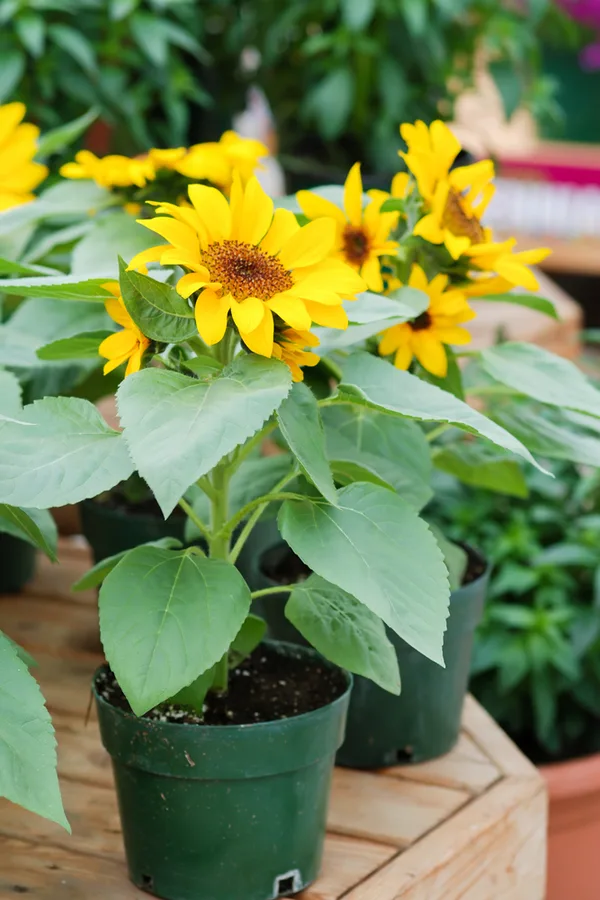
Long-Term Care – How To Grow and Maintain Sunflowers
Germination should take around 7-10 days. Thin seedlings if needed. Bonus tidbit: The sunflower sprouts are actually edible, so instead of throwing them in the trash, add them to your salad.
Watering
When the sunflowers are small, water around the roots about 4 inches from the stems. As long as you water them regularly, sunflowers are one of the easiest seeds to grow! In fact, we often have several come up in the middle of the garden from being “planted” the previous year.
You will want to water the plants heavily once established, but don’t do it every day. Use around a gallon of water for each plant once a week to make sure the roots are well saturated. You may have to water more frequently if it is really hot and your soil is dry out.
Fertilizing
Sunflowers don’t really need fertilization, but you can add a little bit of liquid fertilizer such as Compost Tea. Just make sure to not apply it near the plant’s base, as fertilizers can cause the stalks to become brittle.
Pests & Issues
These beautiful flowers are mostly pest-free, but they can be susceptible to powdery mildew, downy mildew, and rust. Take preventive measures to make sure to avoid these as they can be hard to eliminate once on your plants.
If you are using a taller variety of sunflower, they may need some type of support once their blooms begin to fill out. You can use anything from hog panels to bamboo poles to homemade trellises to give them a bit of support.
Cut Flowers
Sunflowers make beautiful cut flowers! Cut flowers early in the morning, leaving the blooms on a sturdy stem. The cut blooms should last for about a week in water. They are a great way to bring a little bit of sunshine inside your house.
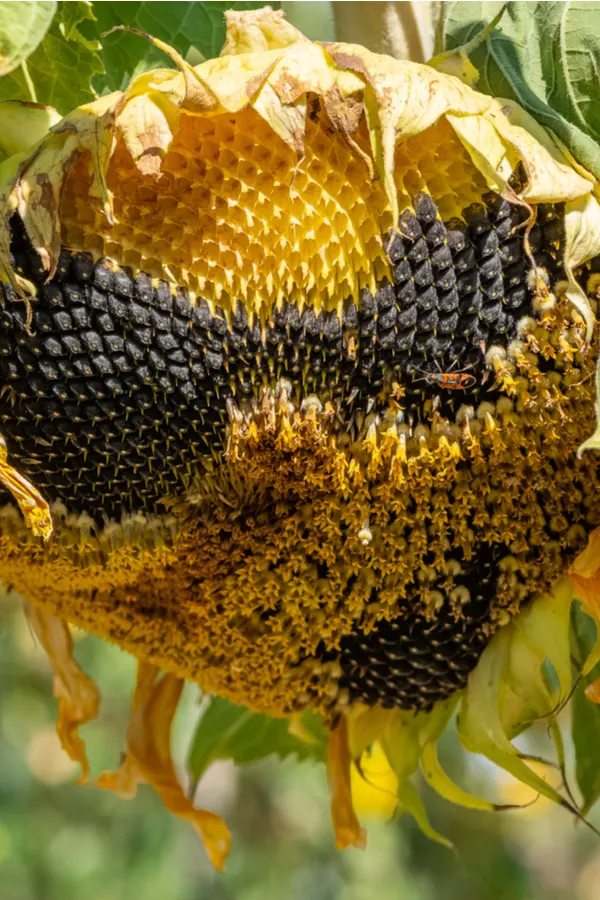
Harvesting Sunflower Seeds
While the seeds make great food for your local birds and animals, you may choose to harvest the sunflower seeds for you to enjoy eating.
Are They Ready Yet?
There are a few signs that you can look for to know if the heads are ready to be harvested. The bright head will start to dull in color slightly and the colorful petals surrounding the head will start to die and fall out.
In addition, if you look at the back of the sunflower, the area called the calyx that is usually bright green will turn a brownish, darker yellow color. This indicates that the plant is no longer sending energy to the seeds and has stopped growing.
How To Dry Blooms
You can attempt to leave the heads on the plant to dry naturally, but you will likely lose many seeds to the birds, squirrels, and other animals instead! You can cover the heads to protect them from wildlife if you choose, and that may help.
If you want to dry them in a safer location, cut the head leaving about 6-8 inches of stalk attached to the head. Place in a container so you don’t lose any fallen seeds. As an alternative, you can also cut the heads early before they turn brown and hang them upside in a pest-free location to dry. Remove as many of the petals as possible to help promote drying.
Place in a location with good airflow that is also pest-free. Allow the head to completely die and turn dark brown. This can take anywhere from 2-3 weeks. The seeds will start to look plump and will appear loose. Once this occurs, the seeds are finally ready to be removed.
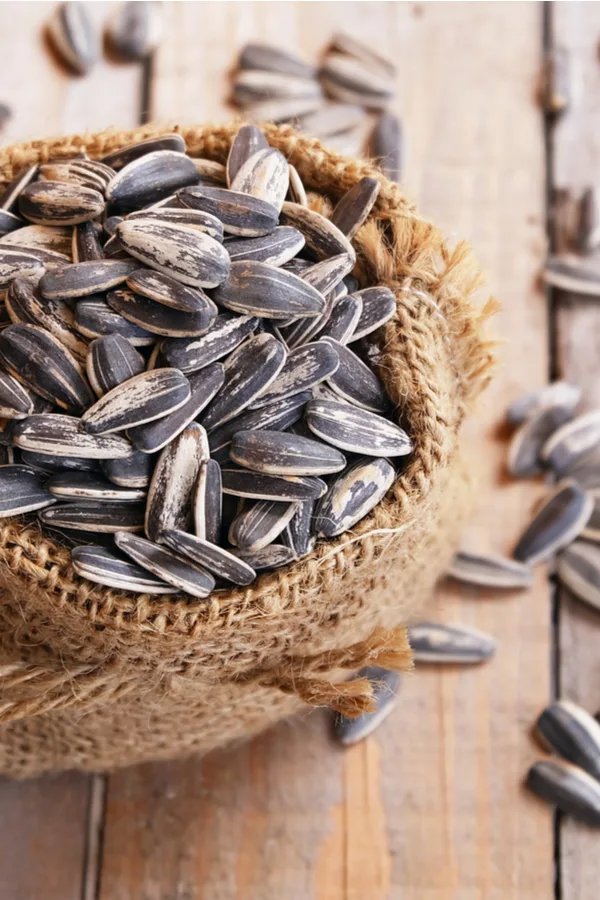
Harvesting Seeds
Lightly scrape off the tiny petals that are attached to each seed. You should be able to then rub your hands over the seeds to get them to fall out. You can also just pull them out if you prefer.
If you are storing the seeds for planting next year, simply place in a cool, dry container such as a brown paper bag.
For roasting recipes, check out this great recipe!
To Conclude…
No matter what you do with the flowers at the end of their growing season, sunflowers are a great addition to any property to add bright, beautiful happy bursts of color.
Feel free to download, print out, or save our Sunflower At-A-Glance sheet. It is sized for half letter printing but can be scaled if needed.
